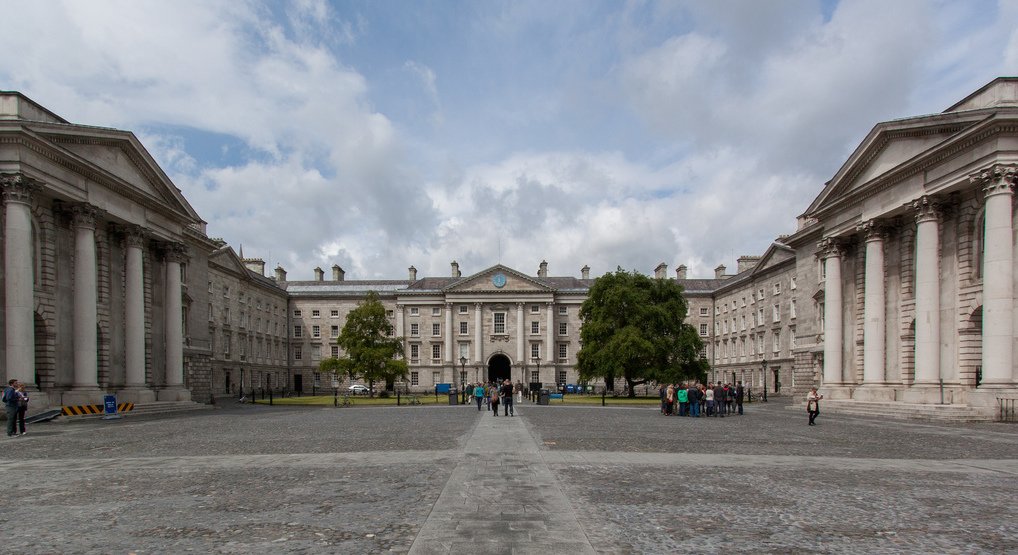Earlier this week, Trinity College Dublin announced the impending launch of its inaugural free Massive Open Online Course (MOOC), making it one of the first universities in Ireland to offer a free online education experience of this kind, which sees it join the growing number of universities across Europe that has ventured into digital learning.
Trinity’s six-week history course "Irish Lives in War and Revolution: Exploring Ireland’s History 1912-1923" examines the lives of different Irish people during this period and will commence in September.
The course is offered through Open University’s FutureLearn, a UK-based platform for online courses that has partnered with several universities to bring MOOCs to students.
This isn’t the first time that Trinity has moved into the online space but unlike the college’s online one-year post-graduate programs, the six-week course is free, meaning accessibility will be a huge driving force in its uptake.
“I think the college has been observing online learning in various locations and just forged a relationship with FutureLearn and wanted a first outing for a MOOC,” says Trinity’s Dr Ciarán Wallace on how the new course came to be.
“You can do a MOOC on anything but they thought the Irish history one would work because of the decade of centenaries we’re in at the moment. Where there’s science and biotechnics and all sorts of things, the history one might have greater popular appeal just now.”
The major challenge is condensing information into a comprehensive program, which is just six weeks long. Ciarán and his colleagues Prof. Ciaran Brady and Dr Anne Dolan, who are leading the course, looked at other MOOCs and how they’re designed and delivered to ensure their course wasn’t just a “skim across the surface” of the topic.
“We didn’t want to be a standard, chronological history,” Ciarán tells us, “our thematic approach is Irish lives”. The course aims to gather different angles on this period and encapsulating that into the short space of a MOOC is the challenge for any course provider. However, Trinity’s history MOOC takes advantage of FutureLearn’s peer-to-peer sharing of coursework, where students will be able to share written work with one another to experience each other’s perspectives.
Many US third-level institutions like Stanford University have embraced MOOCs but its popularity has spread to Europe in the last 12 months or so. We’ve seen a number of European colleges get involved in different ways by partnering with young ed-tech companies and startups.
FutureLearn launched last September, and is owned by The Open University. It now adds Trinity College Dublin to its repertoire of university partners, which already includes respected institutions such as the University of Bath and the University of Leicester.
The platform is currently in beta and is promising more features in the future, according to CEO Simon Nelson, where it recently added the University of Oslo and London School of Hygiene & Tropical Medicine as well as a number of international partners.
Germany’s online course platform, Iversity, only launched in October of last year but is already claiming to be Europe’s biggest MOOC platform, and is attracting educators interested in using it.
“We receive requests from professors and institutions wanting to produce a MOOC on a daily basis,” said co-founder and managing director Hannes Klöpper upon its launch. “This is a clear sign that universities and professors have recognised the potential for bringing university-level education online.”
Meanwhile, in Finland, another online platform called Eliademy was founded in 2012 by former product and project managers at Nokia, Sotiris Makrygiannis and Sergey Gerasimenko. Eliademy is an online tool based on the open source platform Moodle for creating and managing courses and learning tools.
Ed-tech companies point out that MOOCs have many benefits including scalability, where there’s generally no limit on the number of students that can sign up nor are there restrictions on location. Anyone keen to know more about Irish history in the early 1900s, for example, can register. There is also the added bonus of using any device, desktop or mobile - whichever suits the user best.
MOOCs can tailor to different needs for the learner, all depending on what they want to get out of it.
“There might be two ways of looking at it,” says Ciarán, whether this is as a standalone course or a taster and stepping stone for further education in the field. “I think the course itself should be a standalone, satisfying thing in its own right,” he explains, “and if you choose that as a stepping stone, so much the better.”
Platforms like FutureLearn are attempting to bridge the gap between online education and traditional academia by partnering with organisations likes the British Library and the British Museum, which can provide a wealth of learning material for the online learning space.
Iversity is trying to do one better and make it possible to gain credits from your MOOC course under the European Credit Transfer and Accumulation System (ECTS). The major difference in applying this to an online course though is that you’ll still need to take your exams the old fashioned way, by sitting at your desk at one of the locations provided by your institution.
FH Lübeck in Germany was the first college to offer ECTS credits through an Iversity course with Prof. Marc Opresnik and his Fundamentals of Marketing program. The University of Osnabrück will follow suit this summer.
The ability for platforms to generate course material in multiple languages will be a huge benefit for spreading courses out to interested learners too. Iversity, for example, currently offers courses in English, German, and Russian.
As a result, Massive Open Online Courses are proving more and more popular with students of the online age, who are looking to get different results and opportunities out of their respective disciplines.
(Featured image credit: Tim Sackton / Flickr)


